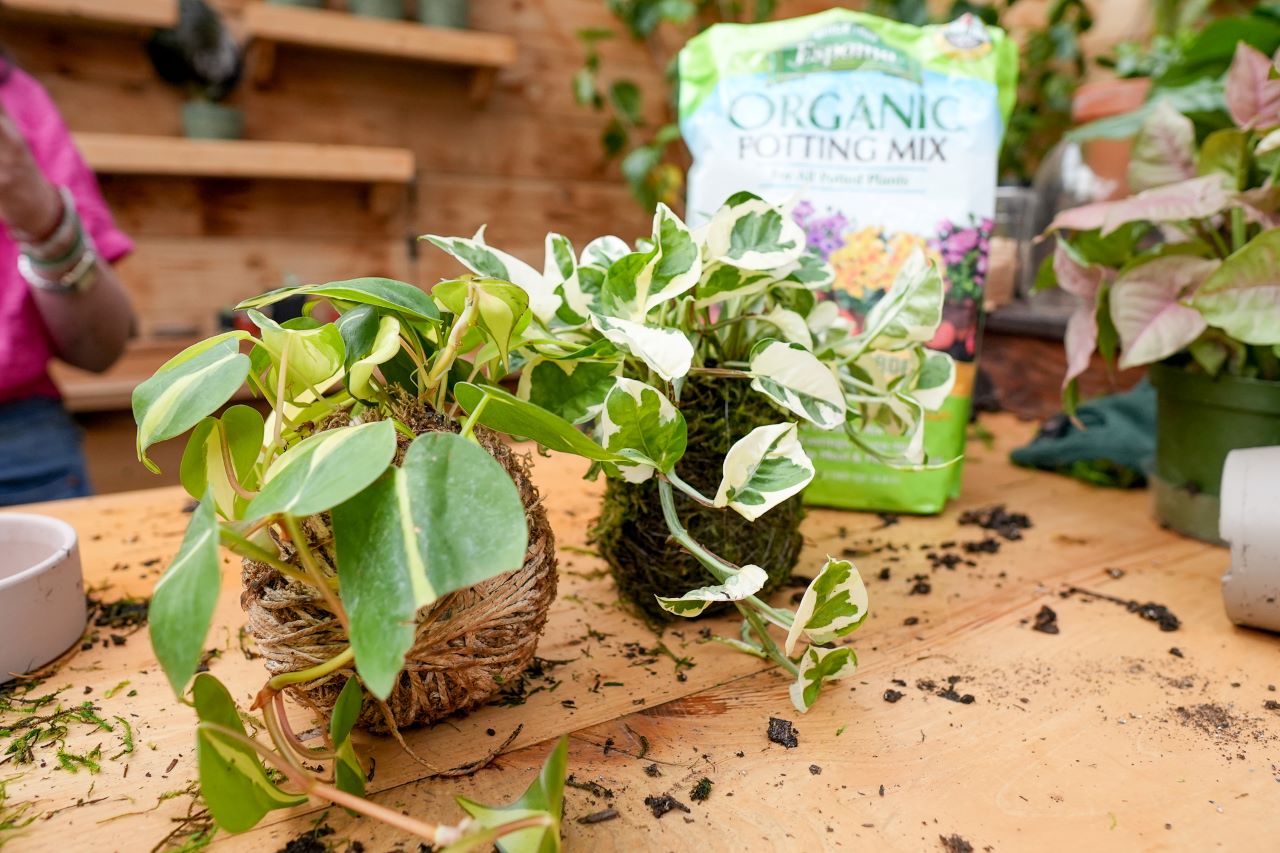VIDEO: How to Make Kokedama 🪴- Growing Joy with Maria


Join Laura from @gardenanswer as she ventures into the greenhouse and guides us through the repotting process of her young geraniums and a stunningly large Kumquat tree. Along the way, Laura shares valuable plant care advice.
For this task, Laura uses Espoma Organic Potting Soil Mix for her geraniums and Cactus Mix for the Kumquat tree, ensuring an optimal growing environment for her plants. To nourish and promote the growth of her green friends, she mixes in Espoma Organic Flower-tone and Citrus-tone to provide the essential nutrients her plants need to flourish.
Featured products:
Join Laura from Garden Answer as she shares her top tips on how to effectively plant garlic, harvest berries, and care for Dahlias.
Laura trusts Espoma Organic Bio-tone Starter Plus when planting her garlic to ensure they have the essential nutrients needed to be successful. Laura uses Espoma Organic Land & Sea Gourmet Compost to help improve her soil to help grow bigger more beautiful plants.
Learn more about Garden Answer here:
https://www.youtube.com/c/gardenanswer
https://www.facebook.com/gardenanswer
https://www.instagram.com/gardenanswer/
Featured Products:
Watch Summer Rayne Oakes of Flock Finger Lakes use her expertise to select and plant a mix of bulbs that promise a cycle of blooms from spring to fall. She uses Espoma Organic Bulb-tone to provide her bulbs the nutrients they need to have big beautiful blooms.
Learn more about Flock Finger Lakes here:
Website: flockfingerlakes.com
Instagram – @flockfingerlakes
YouTube –Flock Finger Lakes
Twitter – @flockny
Facebook –Flock Finger Lakes
Featured products:
Everyone knows the classic red rose, but how about mocha-colored roses, or even purple? Follow along with Summer from Flock Finger Lakes as she uses a variety of Espoma Organic products, like Rose-tone, and Espoma Organic Land & sea Gourmet Compost to transform a once-weedy bed into a beautiful rose patch!
Learn more about Flock Finger Lakes here:
Website: flockfingerlakes.com
Instagram – @flockfingerlakes
YouTube –Flock Finger Lakes
Twitter – @flockny
Facebook –Flock Finger Lakes
Featured Products:
Looking to add a tropical touch to your patio or indoor space? Dive into Summer Rayne Oakes‘ latest video where she shares her top citrus care tips as she plants a Calamondin orange tree. While this delightful citrus hybrid isn’t naturally suited for colder climates, it flourishes when potted under the right conditions.
For the perfect growing medium, Summer chooses Espoma Organic Potting Soil Mix for her citrus tree. To ensure it receives all the essential nutrients, she incorporates Citrus-tone Organic fertilizer into the pot, setting her new Calamondin orange tree on the path to thrive in its fresh new planter.
Learn more about Summer Rayne Oakes here:
Website: homesteadbrooklyn.com
YouTube: @summerrayneoakes
Facebook: facebook.com/homesteadbrooklyn
Instagram: instagram.com/homesteadbrooklyn
Twitter (X): twitter.com/sroakes
Featured Products:
Join Summer from Homestead Brooklyn & Flock Finger Lakes as she plants a garden bed designed for continual 4-season interest. Summer introduces multiple plant varieties that maintain vibrant colors throughout the year.
For her plants that require more acidic conditions, Summer uses Espoma Organic Soil Acidifier to help lower soil pH. She also enriches the soil with Espoma Organic Mushroom Compost, which will add organic material and essential nutrients to help her new plants thrive. We also recommend using Espoma Organic Bio-tone Starter Plus at the time of planting to provide the essential nutrients plants need to establish successfully.
Learn more about Flock Finger Lakes here:
Website: flockfingerlakes.com
Instagram – @flockfingerlakes
YouTube –Flock Finger Lakes
Twitter (X) – @flockny
Facebook –Flock Finger Lakes
Featured Products:
Join Kaleb Wyse of Wyse Guide as he shares his top tips for overwintering plants that are potted in outdoor containers. Not one to let a pot sit empty, Kaleb demonstrates a fantastic way to repurpose it for the fall season – by crafting a vibrant pumpkin arrangement.
When it comes to the transplant process, Kaleb trusts Espoma Organic Potting Soil Mix to ensure his plants have the best growing medium as they transition indoors for the colder months.
Learn more about Wyse Guide here:
YouTube: https://www.youtube.com/WyseGuide
Facebook: https://www.facebook.com/WyseGuide/
Instagram: https://www.instagram.com/WyseGuide/
Website: https://www.wyseguide.com/
Featured Products:
Join Laura and Aaron from Garden Answer as they showcase their newest gardening project. While Aaron, Laura’s husband, is busy planting new trees, Laura adds a new selection of vibrant perennials to her garden beds.
To ensure her plants get a strong start, Laura trusts Espoma Organic Bio-tone Starter Plus. It provides the essential nutrients plants need to thrive in their new setting. When it comes to tree planting, adding a layer of Espoma Organic Land & Sea Compost will help to enrich the native soil. It contains a rich blend of the finest natural ingredients and is enhanced with crab & lobster shells from the sea along with a blend of mycorrhizae, to help build strong roots and retain moisture.
Featured Products:
Join Kaleb Wyse of Wyse Guide as he crafts a festive fall wreath, incorporating some personal touches straight from his garden. A highlight of his DIY wreath is the inclusion of cuttings from his beautiful Limelight Hydrangeas. Kaleb nurtured these hydrangeas right from the start with Espoma Organic Bio-tone Starter Plus and sustained their growth throughout the season using Espoma Organic Holly-tone. Recognizing the hydrangea’s preference for acidic soil, he also amended the soil using Espoma Organic Soil Acidifier.
Dive into the video to witness the transformation of these garden treasures into a beautiful fall emblem.
Learn more about Wyse Guide here:
YouTube: https://www.youtube.com/WyseGuide
Facebook: https://www.facebook.com/WyseGuide/
Instagram: https://www.instagram.com/WyseGuide/
Website: https://www.wyseguide.com/
Featured Products:
